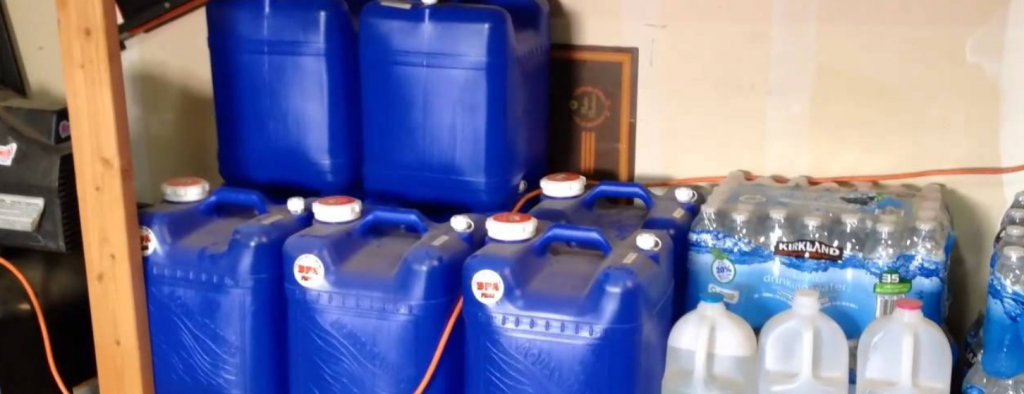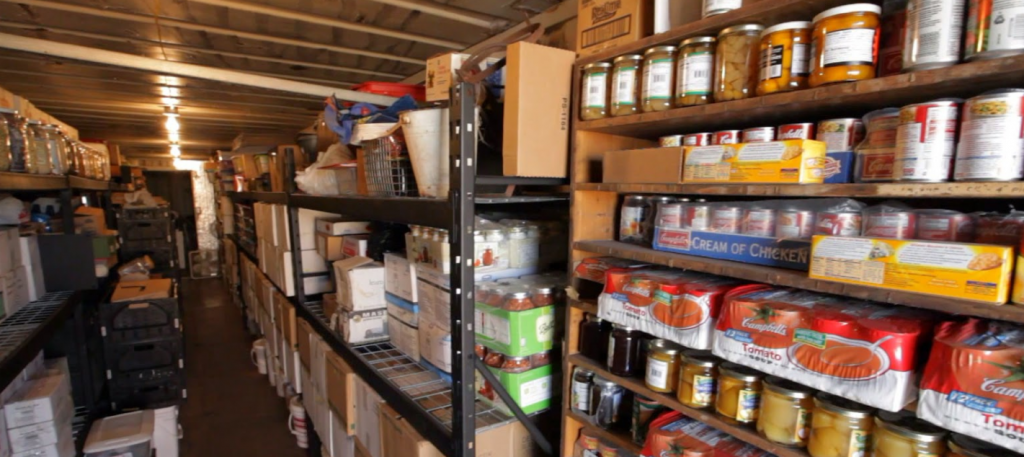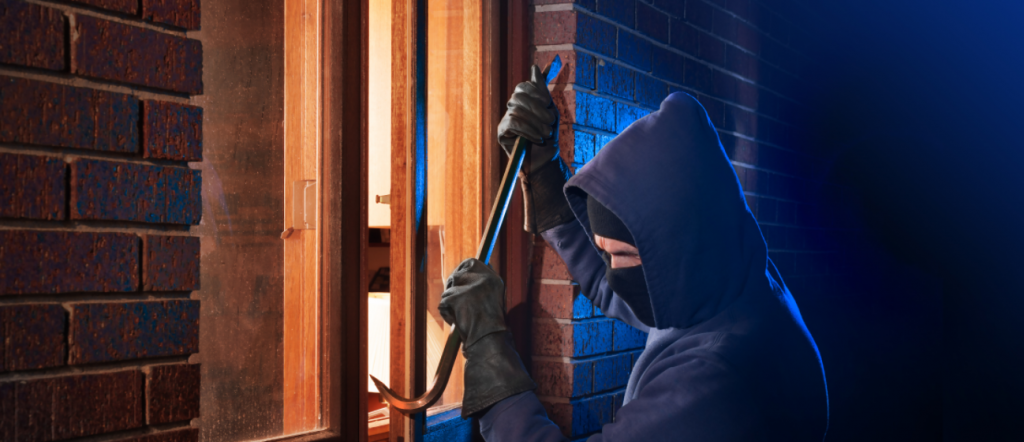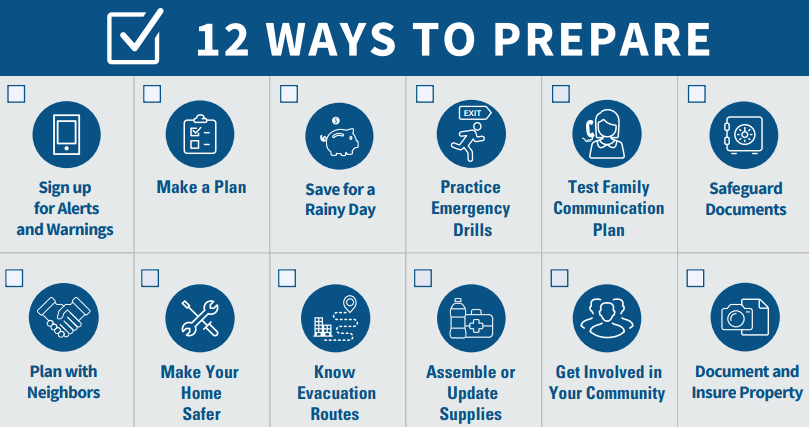This is such a great subject to discuss, scheduling your preparedness, and for a number of different reasons. First, if you’re new to preparedness, and there are many of you out there, it can be very daunting to start. As you do start, you begin to realize very quickly how far behind you may be. By scheduling out your preparedness, you can see the positive changes taking place, which will help you to stay organized making sure you’re not missing something in your initial planning.
Anyone Can Gain From Scheduling Their Preparedness
If you’ve been a prepper for some time already, by going through this type of process, you can set yourself on a regular schedule, causing you and your family/community to stay prepared for the long run.
As well, consider if you’ve been focused on preparedness, but tend to focus more on one area than another. For instance, maybe you like the security aspect of preparedness, and not the medical aspects. Or maybe you’re very into homesteading and keeping yourself fed during difficult times, but have no real idea around security. Scheduling out your preparedness to include all the different areas will help you and your family to be better equipped.
Finally, if you’re a long time prepper and feel you’re the best and most prepared, then you may have already missed one major point of preparedness. That is, to always be learning and to always be improving. If you feel you’ve reached a point and you’ve got all your security bases covered, maybe it’s time to have a friend review it with you. If you feel your family can be fed consistently, even in difficult times, maybe it’s time to consider how you can help others in their times of need. So let’s look at some ways to schedule your preparedness, for now, as a person with beginner or intermediate knowledge of preparedness.
Examples of Scheduling Your Preparedness
Most government Offices of Emergency Management create some form of preparedness for the public at large. This really can be a great place to start. Examples of what some provide are shown above. Eventually, your plan and how you will react for yourself should depend upon your needs. You should not rely on any external organization, government or other, to solve your own preparedness challenges. But “borrowing” from these organizations, at the very least, to get you started and develop a schedule and plan will help get much closer to the goal, much sooner.
For example, the FEMA website, ready.gov shows the following diagram in their Communication Plan documentation:

If you were to take each of these 12 areas and focus on just one per month over the next year, you would find yourself much closer to your family being fully prepared for any natural, and perhaps even man-made, disaster. You would also find that, as you dive into one of the twelve shown, it may drive you to others. Learning to go with the flow will only help the effort.
You might start, in your first month, with simply signing up for “Alerts and Warnings”. And as you’re researching this effort, you find that several of the apps created for such a purpose are written or sponsored by one of the local Community Emergency Response Teams (CERT). As you find out more about CERT, this can help you “become more involved in your community”. CERT may give you opportunities to train in basic emergency response, and CPR and First Aid. Which then can make you more of a resource and you to “Plan more with your Neighbors”. At this point, you’ve already touched on several of the list of twelve.
To be clear, I’m not suggesting this is the only way to create a schedule for you to start on your path of preparedness. But by doing even a small amount of research and putting some form of a schedule in place, you can be more confident the plan will include the many different aspects of preparedness.

Preparing for Clean Air
Another example of creating a schedule is to use the survival rule of threes, ordering them by priority, and then placing them into regular intervals of achievement. Starting with air and shelter, give yourself a timeline, for instance, you might start by setting a goal to have enough N95 masks for your entire family. This became incredibly apparent during the early days of the Covid pandemic of 2020. Then, we must ensure each person is properly trained on how to apply the mask and at what point the mask becomes useless against different threats, and training is key here.

Preparing Your Shelter (Your Home)
For shelter, first ensure your home is properly cared for, whether single family dwelling, large piece of land or apartment. It’s important to make sure the chances of losing your home are very very slim. Having properly managed finances becomes key, of course, making sure you are living well within your means of income. If not, find a way to move to a home that fits within your means. Then of course, be sure the property is insured correctly, so if a loss of home is incurred due to disaster, you’re not left homeless.
Finally, still focusing on shelter, if you own a home or property, living within your means, also indicates you know how much per year it will cost to maintain that home. This can be a difficult pill to swallow. Many people just live in their home until something starts to fall apart, without regular maintenance, and they are always surprised when the roof or furnace needs replacing. If you perform your own maintenance on your home, you’re already a step ahead because you might be more likely to see something coming. But, if you don’t, then take a look around your home. Consider all major appliances, windows, doors, roofs, and try to remember when’s the last time they were serviced. They are all working to protect or provide for you, so do yourself a favor and get them serviced. In doing this, you’ll come to realize that this will help you to plan ahead and budget to replace an item, rather than have it fail on you unexpectedly.
As you can see, preparing for shelter may be a bit more of a project than just a single month, because there are so many different areas to consider. So you may schedule this out over a period of time.

Preparing Your Water Stores
Next, you can start moving on to collecting water. Water is incredibly important, and something that can be relatively simple to plan, It does however require space, so once you settle on a means of collection, plan to stick to that style. I personally have chosen the single gallon bottles from Crystal Geyser as my storage method. These bottles are semi-square in nature. So it makes storing them much easier in my shelving apparatus, and each bottle has a fairly strong handle that makes it easy to pick up multiple bottles at one time. Within a 4 foot area, I can generally hold about 25 gallons per shelf. Three or four shelves and I have enough water for most likely events. Oh yea, and just about every other week, there’s a sale at 10 for 10 bucks! This is not to say this is the only means of water collection, but it does allow for excellent ways to acquire, manage and store it. And of course, I can use these bottles as a normal part of our daily routine and keep cycling out older bottles over time.

Preparing Your Food Stores
This brings up an important point now as we start to transition into food storage. Cycling in new food, and cycling out older food stores. There’s a concept in some preparedness circles called “Shopping Your Pantry”. It simply means two things. First, when you go to the grocery store a large part of the shopping effort should be to replenish items used from your pantry. So when you see those sales of two items for seven bucks, or something similar, you pick them up in order to build up your reserves at home. Depending on your financial situation it could be one or two weeks to build up your pantry, or it could be several months. But once you do this, you will start to realize how easy it can be to build up a reserve. You can easily meet and exceed the recommended 1-2 weeks of food reserves in your pantry.
Second, when you schedule your meals for the upcoming week, plan to look in your pantry first, or “shop” in your pantry for items for the next week of meals. Overall, you may find your grocery bills start going down because you’re able to use what you already have, and only shop for the things you need. One important point here for those of you health conscious fans out there. There’s nothing that can replace fresh fruits, veggies and meat. So, I’m not saying store up on a bunch of packaged meals. Far from it. In fact augmenting your groceries with locally grown (even in your own garden or homestead) fruits and vegetables will only help you, and besides it gives you such a feeling of accomplishment to know that the food on your table came from you very own garden. Just remember, that as you stock up for short term emergency responses, you need to increase your stock with food you would normally eat. This way you can keep it also on a regular cycle of replenishing foods you’ve eaten with new stocks.

Preparing for Protection
Now that your air, shelter, water and food are taken care of, you can continue with scheduling out how you will protect yourself and your family and eventually assist in protecting your community. Consider firearms, with proper training and preparation, clearly firearms can be the great equalizer in home invasions, or similar type events, but if for some reason you’re uncomfortable or improperly trained, they can be more dangerous than beneficial. Really consider this topic and if you decide to move in the direction of any form of firearm, absolutely obtain professional training as soon as possible.
Alternatively, obtaining training in some form of martial arts or combat sport, can help in many dangerous situations. Examples might be Krav Maga, which is an Israeli Combat form that teaches people self protection with defence and simultaneous counter attack. I personally feel there are no other self defense skills that will better serve an average person. However, Krav Maga can also be quite stressful on the body’s joints, so as a person starts to get older, you might consider another form of martial art such as Jiu Jitsu. If you’ve ever seen some of the early days of the UFC (Ultimate Fighting Championship), there is one particular person that stands out. His name is Royce Gracie, and is a 185 pound guy that hails from Brazil. He came into the UFC and faced some of the biggest, most violent opponents and with his calm demeanor proceeded to put them to sleep, or cause them to tap-out in submission due to the severe pain he was causing. That… is Jiu Jitsu! Very powerful and perfectly designed for just about anyone wanting to protect themselves.
And finally, for protection, there are always non-deadly options for self defense. The only thing I would recommend here is be very aware of your local laws related to these types of items. Some knives, batons, and stun guns fall under the same category as firearms when it comes to them being used in deadly force. So absolutely do you research first before you settle on your perfect instrument of self-protection. I have two highly recommended items I typically suggest for people getting started. First, the Fast-Strike Personal Safety Whip, which is a perfect tool for an average person just trying to be prepared for hiking, biking, running, or just walking home from work at night.
And then second is a fairly common tool, often referred to as the “can of mace”. I say this in quotes because I think there are better alternatives to the traditional spray. Namely, the SABRE RED Pepper Gel Spray for Runners, or something similar. This little tool is great because it’s so light and unobtrusive, yet very effective if you find yourself in a potentially dangerous situation. Just point, and spray, and this GEL, will cover and stick to a person’s face causing a fairly severe reaction by a perpetrator. The nice thing about a gel, rather than the spray, is when in a windy environment, sprays can just as easily get whipped back in your direction causing issues for you and your own eyesight. With the gel, this is no longer an issue.
Whatever means you use, just continue to focus on the purpose of the protection while undergoing your training or research. If your goal is to “Protect this House”, this can often be done pretty well with a shotgun and a box of shells (again, with proper training and understanding of the weapon). But if you’re more comfortable with using martial arts as your primary defense, make sure the training you receive is designed to protect you in specific dangerous scenarios. It won’t do you any good to learn Karate Kata for 3 months (no offense Karate fans… Heh heh), and never know how to respond when a person attacks you from behind one late night after work.
I hope you’ve gained some understanding from this blog on how you might start on your road to preparedness by scheduling out the different areas. It may seem daunting at first, but as you start to get into it, and your understanding improves, I promise you will become more comfortable, and you will be more at peace!
Until next time… Matt Marshall… signing off!
@genxtalkin


